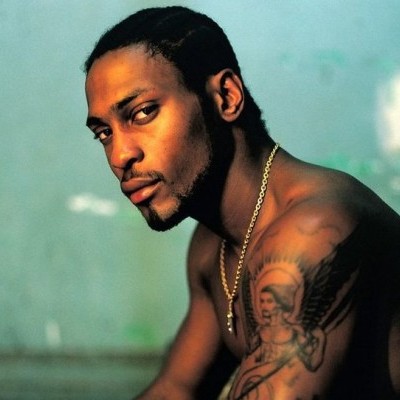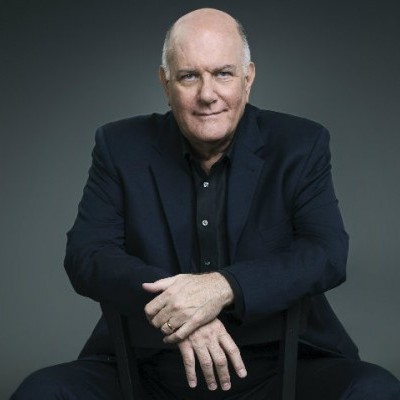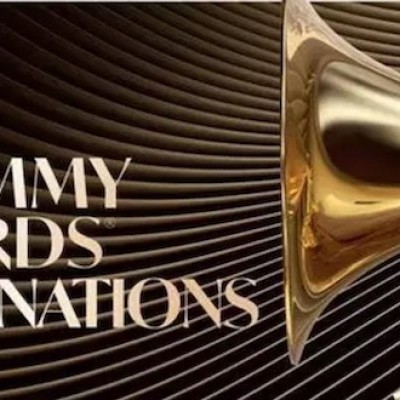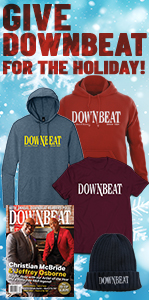Oct 28, 2025 10:47 AM
In Memoriam: Jack DeJohnette, 1942–2025
Jack DeJohnette, a bold and resourceful drummer and NEA Jazz Master who forged a unique vocabulary on the kit over his…
Bob Dylan’s 2015 album Shadows In The Night (Columbia) contains songs that were previously recorded by Frank Sinatra.
(Photo: )As a young man, Bob Dylan started composing idiosyncratic material because he couldn’t find traditional folk songs that conveyed what he wanted to express. Now, as an old man, he has turned to the Great American Songbook to communicate his feelings, interpreting tunes such as “Autumn Leaves,” “Where Are You?” and Irving Berlin’s masterpiece “What’ll I Do.” One might associate such compositions with a certain degree of theatricality—as opposed to the ostensibly autobiographical, “authentic” songcraft that rockers claim as currency.
Rather than hide behind layers of sonic trickery, Dylan, 73, leaves himself exposed on Shadows In The Night. When a singer sails into senior citizen status, it’s common for a producer to augment his fading instrument with the bulwark of lush orchestration, backing vocalists or sprightly duet partners. Dylan eschews all that. Teamed with his road band, he recorded relatively spare versions of 10 songs—all of which had been previously cut by Frank Sinatra—and then produced the album himself (under the pseudonym Jack Frost).
Whereas Sinatra majestically belted out the prayer “Stay With Me” bolstered by soaring strings, Dylan pairs his gritty vocals with Tony Garnier’s poignant arco work and Donny Herron’s masterfully hypnotic pedal steel guitar.
No one’s ever going to confuse Dylan with Pavarotti, but he’s in fine voice here—at least compared to the growling, guttural delivery on his 2012 album Tempest. The frayed quality of his vocals reinforces the vulnerability and loneliness that his despairing narrators experience.
On “Why Try To Change Me Now,” Herron crafts a dreamy, drifting melodic line as Dylan convincingly portrays a bewildered, weary character who knows that he’ll always be out of step with society’s conventions. Bravo.
(Note: To read a story about recording engineer Al Schmitt—who worked on Shadows In The Night—and his role as a mentor at the 2016 Grammy Camp Jazz Session, click here.)
—Bobby Reed

Jack DeJohnette boasted a musical resume that was as long as it was fearsome.
Oct 28, 2025 10:47 AM
Jack DeJohnette, a bold and resourceful drummer and NEA Jazz Master who forged a unique vocabulary on the kit over his…

D’Angelo achieved commercial and critical success experimenting with a fusion of jazz, funk, soul, R&B and hip-hop.
Oct 14, 2025 1:47 PM
D’Angelo, a Grammy-winning R&B and neo-soul singer, guitarist and pianist who exerted a profound influence on 21st…

Jim McNeely’s singular body of work had a profound and lasting influence on many of today’s top jazz composers in the U.S. and in Europe.
Oct 7, 2025 3:40 PM
Pianist Jim McNeely, one of the most distinguished large ensemble jazz composers of his generation, died Sept. 26 at…

Drummond was cherished by generations of mainstream jazz listeners and bandleaders for his authoritative tonal presence, a defining quality of his style most apparent when he played his instrument unamplified.
Nov 4, 2025 11:39 AM
Ray Drummond, a first-call bassist who appeared on hundreds of albums as a sideman for some of the top names in jazz…

To see the complete list of nominations for the 2026 Grammy Awards, go to grammy.com.
Nov 11, 2025 12:35 PM
The nominations for the 2026 Grammy Awards are in, with plenty to smile about for the worlds of jazz, blues and beyond.…






